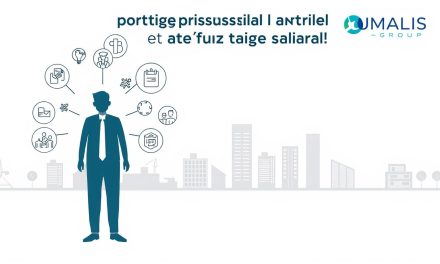As an independent professional in France today, you face choices that shape both reputation and revenue.
I remember a freelance consultant who lost a long-term client after a one-size-fits-all approach failed to meet a small team’s needs. She redesigned how she worked, centered people, and rebuilt trust. Within months her pipeline stabilized and referrals rose.
This guide explains the clear definition of inclusive practice for solo and small teams. You will learn simple actions and metrics to make your work more accessible and competitive.
We show how a people-first culture drives better client outcomes, steady pricing, and repeat business. Research shows equitable employers outperform by valuing unique perspectives, boosting innovation, recruitment, and retention. For practical steps and evidence, see this short briefing on the topic: job diversity research.
Table of Contents
Key Takeaways
- Trust wins clients: inclusive choices build deeper commitment.
- Small changes improve project delivery and repeat business.
- Clear definitions help you communicate value to clients.
- People-centric practices support stable pipelines and pricing.
- Start this week with simple, measurable actions.
Beginner’s guide to diversity, inclusion, and belonging for independents in France today
As an independent in France, you can make small process changes that widen who can work with you. Start by using clear language in proposals and by offering pricing transparency to improve access.
What to know first: the definition and the difference between terms matters when talking with procurement or HR. Be ready to explain who is included, what the expected experience will be, and how your work adapts across organisation types.
- Prospecting: note identity needs and communication styles.
- Delivery: use accessible meeting formats and plain-language summaries.
- Aftercare: collect simple feedback to show a diverse workforce felt heard.
Ask partners where representation sits—are under-represented people only in one part of the business? That telling question reveals whether efforts are broad or token.
Small, consistent steps unlock potential. Show examples in case studies and connect people-friendly choices to better client outcomes.
What is diversity and inclusion?
A tight definition lets you audit who has voice and who shapes outcomes. Use clear terms to show clients how identity, role, and background influence collaboration.
Diversity: identity-based differences across social and professional dimensions
We define diversity as identity-based differences that cover social traits (age, gender, culture, caring roles) and professional traits (role, education, location). These overlapping dimensions create unique viewpoints that change how people join discussions and make decisions.
Inclusion: getting the mix to work—respect, connection, contribution, progression
Inclusion means making sure presence becomes influence. Ask whether stakeholders feel respected, connected, contributing, and progressing with equal access to resources.
Belonging and intersectionality: why lived experience shapes workplace culture
- Representation is who is present; true inclusion is whose perspectives shape work.
- Intersectionality shows how groups with overlapping identity traits face distinct barriers.
- Practical signals: who speaks in workshops, who reviews deliverables, whose constraints set scope.
- Respectful language, informed consent, and predictable routines support wellbeing and stronger contributions.
Use these definitions in proposals to show measurable difference between optics and real influence.
Why inclusion in the workplace builds sustainable independent careers
Research links equitable team practices to measurable gains that solo consultants can translate into business resilience.
Research shows companies with genuine diversity and inclusion report higher revenue growth and greater readiness to innovate. For an independent, this means a stronger pipeline, more upsell moments, and clearer positioning when bidding for work.
Research-backed benefits: innovation, performance, and access to opportunity
Evidence ties fair processes to better performance and wider access to clients that prioritise ethical suppliers.
- Performance: inclusive teams drive innovation and higher revenue—outcomes you can cite in proposals.
- Access: fair methods open doors to companies seeking diverse workforce partners.
- Practical gains: clearer briefs, faster decisions, and reduced rework protect your margins and time.
Retention and trust: avoiding tokenism and earning long-term client commitment
When employees trust fair treatment, they are roughly 9.8 times more likely to look forward to work, 6.3 times more likely to feel pride, and 5.4 times more likely to stay. Translate these « times » into client terms: happier teams deliver faster, praise your work, and renew contracts.
Token mentions fail; operational fairness wins. Focus on practices that develop, empower, and trust contributors. Use simple signals—response times, meeting participation, decision clarity—to show early wins and build retention over time.
From policy to practice: embedding inclusive culture in solo and small-team work

Turn policies into everyday practice by adding simple rituals that shape how you meet, price work, and gather feedback. True change comes when rules become repeatable habits that clients notice.
Client experience: accessible communication, fair pricing, inclusive scheduling
Use plain-language summaries and visual alternatives. Offer phased billing or sliding options so pricing is fair and understandable.
Set meeting windows that respect caregiving and observances. Publish clear privacy notices and cookie consent choices to protect autonomy.
Project processes: bias-aware briefs and ethical research
Validate problem statements with varied user perspectives so requirements reflect real needs, not the loudest voice.
Adopt ethical research norms: consent, anonymity choices, cultural sensitivity, and fair incentives that protect participant wellbeing.
Collaboration and leadership behaviours
Diversify your partner network and create equitable contracts that protect credit and IP. At the first meeting, set norms, rotate speakers, document decisions, and invite dissent.
- Practical checklist: proposal items, onboarding accessibility, decision criteria visible to all.
- Signals: publish an accessibility statement and keep a feedback channel that closes the loop.
Small, consistent steps convert policies into a high-trust environment that increases access and opportunity for clients and contributors. For practical templates and management tips, see management advice.
Measuring inclusion beyond headcount for a diverse workforce
Meaningful metrics are small, repeatable checks that expose whether teams feel respected and heard.
Start with signals you can observe quickly. Track who speaks in meetings, async participation rates, and the depth of comments on shared documents. These items give fast insight into engagement and who has access to influence.
Signals and simple metrics
- Representation checks: not just counts, but who reviews decisions and who sits on review panels.
- Engagement: attendance stability, comment depth, and repeat contributors on tasks.
- Retention proxies: stakeholder continuity across milestones and fewer escalations.
- Feedback quality: anonymous pulse surveys, structured interviews, or external facilitators to capture how employees feel.
« High-trust cultures show faster approvals, fewer change requests, and clearer ownership. »
Use the DCA lens—respected, connected, contributing, progressing—to blend qualitative notes with light quantitative checks. Tag demographic risk only with consent and protect privacy. Align measures to company goals so results translate to clear business value.
Avoiding common pitfalls that undermine inclusion efforts

Token gestures often show up as extra faces in decks, not extra seats at the decision table. Spotting this early protects trust and delivery.
Tokenism vs genuine practice
Tokenism is cosmetic representation without power. You may see diverse faces in kickoff slides while the same people make all decisions.
Genuine practice involves developing, empowering, and trusting people so they shape outcomes.
Closing the gap: simple actions that work
- Assign rotating facilitators and publish decision logs.
- Document who was heard and why; invite groups to shape scope, not just validate it.
- Structure meetings: timed slots, spoken-turn rules, and visible action trackers.
- Treat resistance as risk data—reframe change as quality and delivery stability work.
« Small, repeatable habits convert policies into reliable outcomes. »
If efforts stall: set written commitments, success criteria, and review cadences. Close the loop by acknowledging feedback and reporting outcomes.
How inclusive company culture amplifies your business impact
A high-trust culture turns everyday team habits into clear business advantages for solo consultants and small agencies.
Connecting employee experience to client outcomes
When employee experience improves, teams make faster decisions. That reduces delays and raises quality. Clients notice clearer deliverables and stronger brand reputation.
Scaling a For All mindset across projects
Model simple behaviours in discovery, delivery, and review. Use acknowledgment, dignity, and compassion as routines. These steps make culture a visible part of your value proposition.
- Light playbooks: meeting norms, accessible docs, role clarity.
- Wellbeing safeguards: predictable schedules, breaks, safe forums.
- Clear contributions: record who did what and why it mattered.
« For All companies unlock the potential of differences and turn collaboration into a strategic advantage. »
| Metric | What it shows | Business impact |
|---|---|---|
| Participation rate | Who engages in meetings | Faster approvals, fewer escalations |
| Feedback quality | Depth of comments and suggestions | Higher delivery quality, repeat work |
| Stakeholder continuity | Same people across milestones | Lower rework, stable relationships |
Who plays what part: leaders set norms, managers protect time, contributors share progress, suppliers follow playbooks. Embed these items into success metrics to make culture measurable and repeatable.
Conclusion
For independents in France, practical routines convert goodwill into reliable business results. Use the methods in this guide to shape how you meet, price, and measure work so outcomes become predictable.
Identity-aware practices and respectful collaboration help employees and contributors play full roles. This strengthens delivery, reduces rework, and unlocks new opportunity for your company and clients.
Share the trust story with partners: when teams feel fairly treated they look forward to work, show more pride, and stay longer—real multipliers you can cite in bids.
Start this week with one pilot: measure employee feedback quality, rotate facilitation, and add a plain-language summary. Repeat these steps; small, steady acts beat one-off statements.
Inclusion and diversity are good business and good citizenship—start where you are, measure what matters, and publish short learning notes so clients choose you with confidence.
FAQ
What do we mean by "diversity and inclusion" for independent professionals?
We refer to the mix of identities, backgrounds, and perspectives that shape how people work together and how clients experience services. For independents this means intentionally welcoming different ages, genders, abilities, cultural origins, and professional histories so teams and offers perform better.
Why should a freelancer or small firm prioritise inclusive practices?
Inclusive practices boost creativity, widen market access, and strengthen client trust. They reduce turnover risk, improve referrals, and help you win projects where representation and ethical practice matter.
How can I make client communications more accessible and fair?
Use plain language, offer multiple contact channels and scheduling options, and set transparent pricing and terms. Ask about access needs early and build flexible timelines to reduce barriers to collaboration.
What simple metrics can I use to measure progress beyond headcount?
Track representation in projects, client and partner satisfaction scores, repeat business rates, and qualitative feedback about belonging. Small, regular pulse surveys and project retrospectives give actionable signals.
How do I avoid tokenism when trying to be more inclusive?
Involve people meaningfully in decision-making, invest in development, and share responsibility for outcomes. Avoid symbolic gestures without structural changes to contracts, pay, and career access.
What steps turn inclusive policy into everyday practice for solopreneurs?
Start with clear client policies, bias-aware briefs, inclusive intake forms, and a diverse supplier list. Practice inclusive language in proposals and commit to continuous learning through feedback and partner audits.
How does an inclusive culture improve client outcomes and reputation?
When people feel respected and heard, they deliver higher-quality work and better user insights. That leads to stronger case studies, referrals, and brand credibility among clients who value equity and ethics.
Can small teams scale inclusive approaches across projects?
Yes. Use repeatable templates for inclusive research and contracting, rotate partners to broaden perspectives, and document lessons so practices travel across projects and collaborators.
What leadership behaviours create a high-trust environment for independent workers?
Demonstrate openness, give clear expectations, model equitable decision-making, and provide regular, constructive feedback. Prioritise wellbeing and fair compensation to sustain long-term partnerships.
Where can independents find resources and guidance to improve inclusivity?
Seek reputable sources such as nonprofit research centres, industry associations, accessible design guides, and local professional networks. Practical toolkits, templates, and peer mentoring programmes accelerate adoption.





